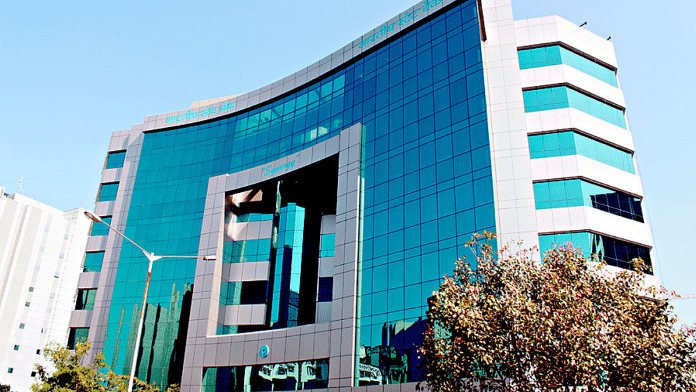New Delhi: Income inequality has reduced substantially since 2013-14, with a large section of income tax filers seeing their reported income having increased since, while the share of income reported by the filers at the top of the income distribution has declined, a new study has found.
Released Monday by the research desk of the State Bank of India (SBI), the study showed that, based on data released by the Income Tax Department, more than one-third of the people who reported an income of less than Rs 3.5 lakh a year in 2013-14 have been able to move to higher income brackets by 2020-21.
It further showed that the bulk of these filers shifted to the income bracket of Rs 3.5-5 lakh and Rs 5-10 lakh (15.3 percent each), while some (4.2 percent) even managed to reach the Rs 10-20 lakh bracket over this period.
At the same time, the report found that although the number of people reporting incomes of more than Rs 100 crore a year had grown substantially over this period — from 23 in financial year (FY)14 to 136 in FY21 — the share of their combined income had actually fallen.
“In FY14, combined income of 23 individuals with income more than Rs 100 crore was 1.64 percent of the total income of FY14,” the report said. “Even though the number of such individuals has increased to 136 in FY21, the share of their combined income in the total income of FY21 has fallen to 0.77 percent.”
As a result, the report said that India’s Gini coefficient — a measure of income inequality — had fallen from 0.489 in 2011-12 to an estimated 0.402 in 2021-22. A Gini coefficient of 0 denotes complete equality and a coefficient of 1 denotes complete inequality. A shift towards 0 is therefore desirable as it means inequality is reducing.
It is important to note that this data is limited to those who filed income tax returns over this period. The total number of people filing income tax returns stood at 7.4 crore in 2021-22 and is estimated to touch 8.5 crore for the financial year 2022-23. This would work out to an estimated 6 percent of the population.
The report went on to show how the growth at the bottom of the pyramid was not restricted to individuals but extended to companies as well.
Also Read: Prosperity or disparity? Haryana’s new education scheme ignites a debate
Even small companies are growing
According to SBI’s analysis, about one-fifth (19.5 percent) of micro firms (with annual turnover less than Rs 5 crore) that were active throughout the 2013-21 period were able to move to higher income categories over this period.
“Out of these, 4.8 percent firms have transitioned themselves into small firms (annual turnover up to Rs 50 crore), around 6.1 percent firms transitioned into medium-sized firms (annual turnover up to Rs 100 crore), and around 9.3 percent firms are transitioned into large-sized firms (annual turnover higher than Rs 100 crore),” the report said.
The report said that recent data released in December by the Reserve Bank of India in its Trends and Progress in Banking report confirmed that small and medium enterprises (SMEs) were getting larger.
The RBI data showed that the average size of the loans taken by these companies had grown from Rs 4.2 lakh in 2020-21 to Rs 10.6 lakh in 2022-23.
“This reveals integration of MSME units with larger value chains as PLI (Production-Linked Incentive) activity is getting momentum,” the report said. “This will increase the ability of MSME units to raise capital through (non-bank) debt markets.”
Overall, SBI’s calculations show that the weighted average annual income of those filing income tax returns has risen from Rs 3.1 lakh in FY12 to Rs 11.6 lakh by FY21. It predicts that the weighted average income for FY22 will be in the range of Rs 12.5-13 lakh.
(Edited by Uttara Ramaswamy)



